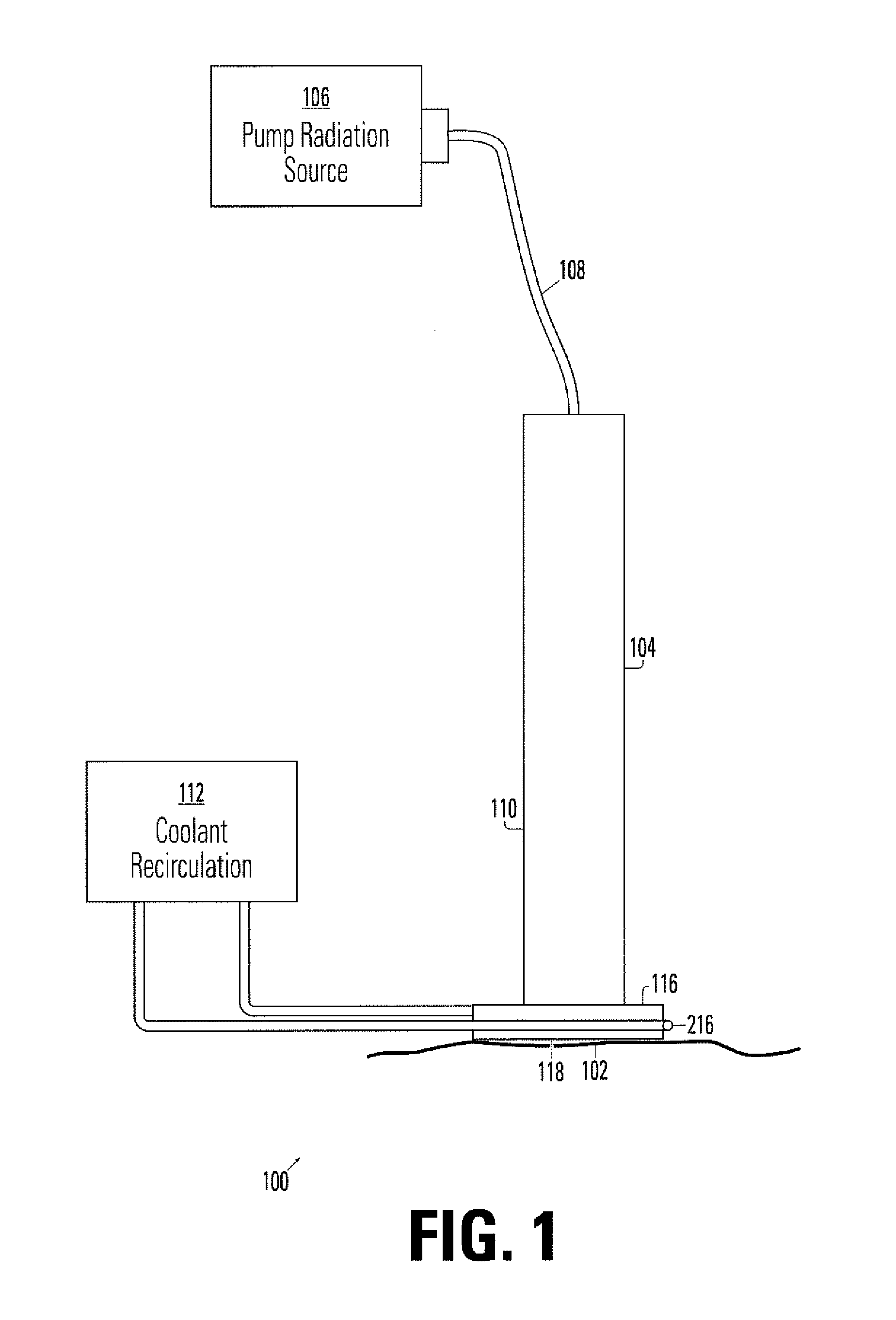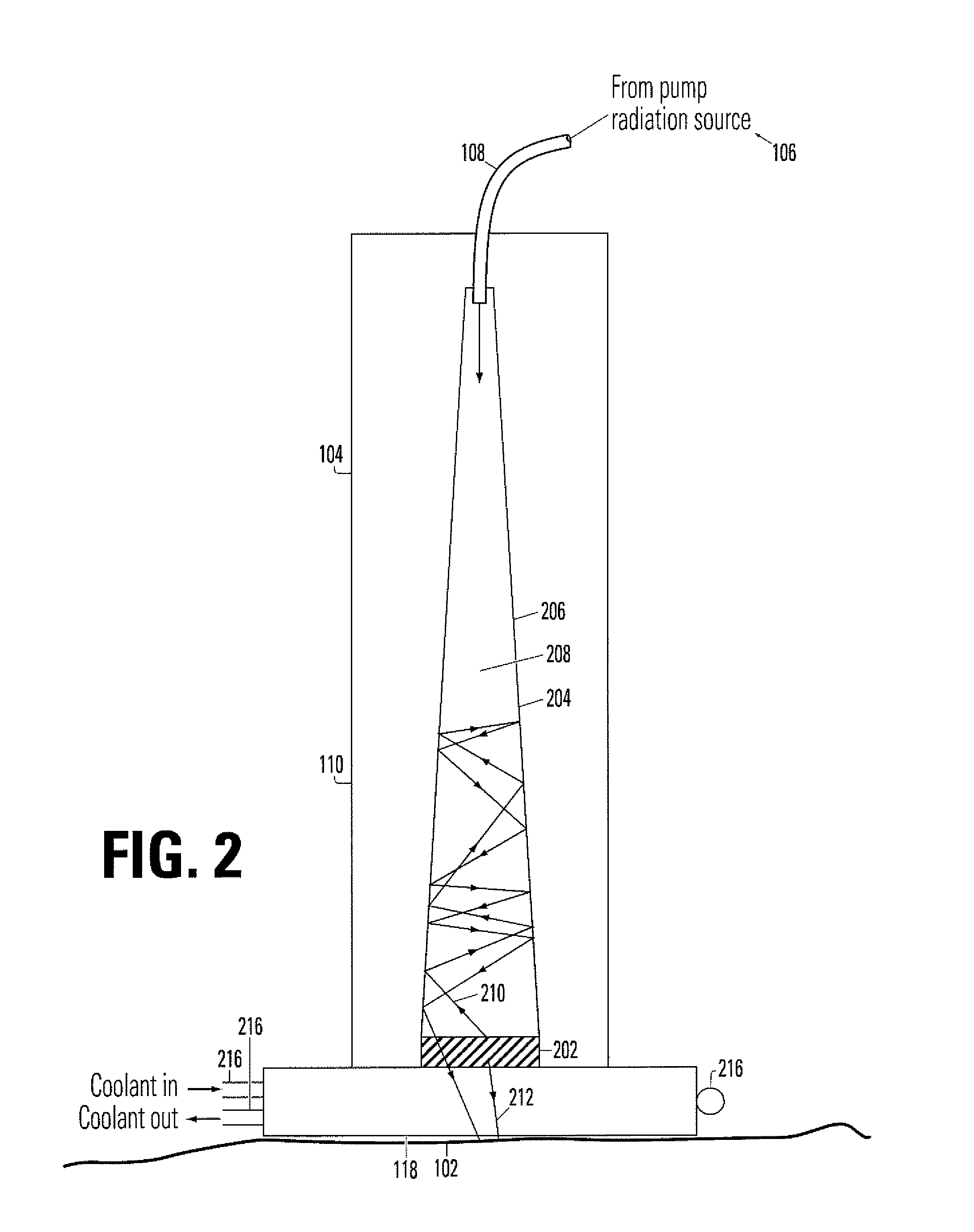Device for irradiating tissue
a tissue irradiation and tissue technology, applied in the field of optical devices, can solve the problems of high cost and complexity, substantial repair or replacement costs, and partially or fully inoperativeness, and achieve the effects of reducing tissue thermal damage, less prone to malfunction, and manufacturing cheaply
- Summary
- Abstract
- Description
- Claims
- Application Information
AI Technical Summary
Benefits of technology
Problems solved by technology
Method used
Image
Examples
second embodiment
[0028]FIG. 4 depicts a device 400 for irradiating tissue 102. The device housing has been omitted in FIG. 4 for the purpose of clarity. Device 400 is provided with a fluorescent element 402 and window 404 of similar description to fluorescent element 202 and window 116 of the FIG. 2 embodiment. Redirector 406 consists essentially of a mirror 408 having a coating 410 which selectively reflects wavelengths corresponding to the radiation emitted by fluorescent element 402 while being substantially transparent to wavelengths corresponding to the pump radiation. Coating 410 may conventionally comprise a plurality of dielectric layers, the number, thicknesses, and composition of dielectric layers being chosen to produce the desired selective reflectance behavior. As indicated by ray 412, radiation emitted by fluorescent device 402 in a non-preferred direction (away from tissue target 102) is reflected by coating 410 and thereby redirected toward tissue target 102. Window 404 may be provid...
third embodiment
[0030]FIG. 6(a) is a cross-sectional view of a device 600 for irradiating tissue 102 according to the invention. Device 600 is provided with a fluorescent element 602 and window 604 of similar description to fluorescent element 202 and window 116 of the FIG. 2 embodiment. Redirector 606 comprises a waveguide 608 having a reflective entrance face 610 and reflective walls 612 extending from entrance face 610 to fluorescent element 602. The core of waveguide 608 may be fabricated from glass, sapphire or other suitable high refraction index material. Referring to FIG. 6(b), which shows a top plan view of entrance face 610, it is seen that entrance face 610 includes a central aperture 614 through which pump radiation from radiation source 106 is admitted into waveguide 608. Central aperture 614 is configured to be substantially transparent in the wavelength(s) of the pump radiation. Device 600 may include a divergent lens or similar element 616 positioned between the end of optical fiber...
PUM
 Login to View More
Login to View More Abstract
Description
Claims
Application Information
 Login to View More
Login to View More - R&D
- Intellectual Property
- Life Sciences
- Materials
- Tech Scout
- Unparalleled Data Quality
- Higher Quality Content
- 60% Fewer Hallucinations
Browse by: Latest US Patents, China's latest patents, Technical Efficacy Thesaurus, Application Domain, Technology Topic, Popular Technical Reports.
© 2025 PatSnap. All rights reserved.Legal|Privacy policy|Modern Slavery Act Transparency Statement|Sitemap|About US| Contact US: help@patsnap.com



